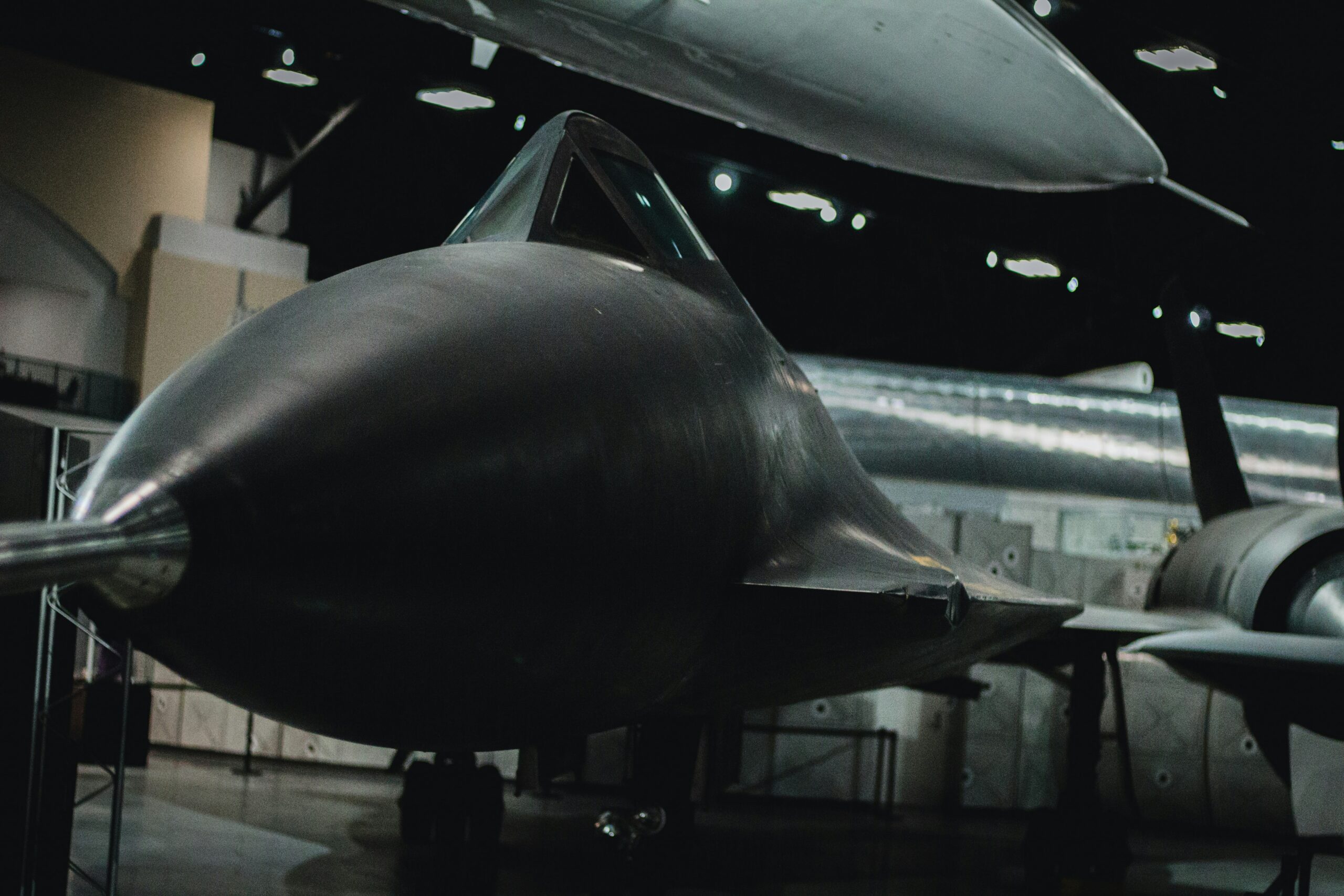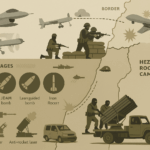The idea goes back to late Soviet labs. Scientists hunted fresh paths that would dodge new U.S. missile screens. They built odd-shaped test bodies, flew them on short hops, then picked a low-arc plan that hugs upper sky layers. Officials wrote few words about those days. One brief note did hint at thin ceramic tiles that still kept their grip under white-hot stress. For comparison, global hypersonic developments show the rapid pace at which other nations are advancing similar technologies.
In 2018 President Putin shared a short clip. He bragged about wild speed and globe-cross reach. Open-source sleuths scanned satellite pics of Orenburg ranges. Scorch marks on pads lined up with rumoured launches. Yet, no clear data show how engineers cool the nose while pressure spikes. Moscow shrugs off such questions, so outsiders keep guessing.
Job inside Russia’s triad
Leaders slot the Avangard beside bombers and sea missiles. It can carry a nuclear tip near two megaton, maybe a bit less. Commanders also say a plain metal cone, if pushed that fast, smashes like dynamite — so either way the hit is rough.
Key staff repeat that the craft can swing sideways after boost. That zigzag ruins normal intercept math. U.S. and NATO planners admit present walls, like Aegis or GMD, might miss. Recent missile defense evaluation contracts highlight how urgently the U.S. is seeking ways to address such new threats. Critics fear a new rush: if one side gains edge, another will chase.
Beating the heat
Normal steel softens above 1 000 °C. At Mach 27 the skin sees double that heat. Design teams mixed powder ceramic, carbon layers, and a nickel alloy mesh.
Core items, as local papers list, include:
- Silicon-carbon tiles that shrug off flash temps
- Foamed carbon slabs around the flight computer
- Ultra-thin gold mesh that shunts static arcs away
- Spray-on zircon coat for leading edge tips
How it steers
Traditional warheads fly a neat bell curve. Avangard flattens the arc, then darts left or right. Short stub fins pop, shift, then fold. A small gas thruster pack helps nudge pitch.
Western think-tank notes ask if sudden bends shake the nose loose. At such speed even a one-degree jerk can tear plates. Russian test teams claim sensors hold course within twelve meters of aim. Proof images stay sealed, so the debate drags.
Riding on old rockets
Russia chose the UR-100N UTTH booster, a sixty-ton veteran from the 1970s. Crews slide the glide car into the fairing, fuel up in half a day, and stand by. After burnout the vehicle cuts shallow and keeps pushing under its own lift.
Officers like this cheap mix. They say “why bin a solid shell that still flies”. Updating a worn launcher costs less than forging a brand-new stack. That saving matters while budgets face sanction pain.
Arms pacts under strain
Most treaties speak of range or throw weight, not slide-and-skip craft. The INF pact died in 2019. New START covers launch tubes, yet leaves glide speed aside. U.N. envoys whisper about an extra protocol, but talks stall once words hit “verification”.
The U.S. studies “glide killers” that sprint in mid-course. China runs its own HGV rig near Mach 20. France, India, even Australia now fund small trials. Observers warn that once three powers field the tech, global spread becomes near certain.
Sparse inspection routes
ICBM silos once welcomed U.S. teams under START. Hypersonic bays stay shut. No fixed treaty forces Moscow to roll towing doors for cameras. Washington likewise hides its LRHW kit at desert posts.
Analysts stitch clues from public budgets, tiny drone snaps, or short TV clips where a guard forgets to block serial numbers. Even with new AI image tools, margins for error stay wide.
Home front talk and cash load
State TV hails Avangard as proof sanctions can’t choke science. Talk shows flash graphics with bright tails. Critics, mostly on niche sites, ask if hospital roofs leak while defense grabs rubles. Hard data on unit cost sit under seal, so guesses swing from $40 million to $120 million each set.
Economists note the ruble fell yet wages lagged. Still, defense plants run full shifts. Job ads in Perm and Ufa list openings for “thermal chemist, ceramic press operator”. The field keeps lights on for many towns.
Orenburg drill snapshot
In mid-2023 rocket troops ran a snap exercise. Local snow fields saw tracked haulers glide to hidden barns. Crews rehearsed a five-hour turn-round, swapped control boards, drove to forest pads, and plugged dummy warheads. Reporters filmed only the convoy start; the rest stayed off-limits.
A Colonel, name blurred, told a regional channel that all cues fired right on time. No foreign attaché watched, so only Moscow’s word stands. Yet, footage showed launch doors swung smooth, hinting steady maintenance.
Voice of the specialists
Members of the Academy of Rocket & Artillery Sciences offered mixed notes. Professor Artyom Lysenko called Mach 27 “the edge of current physics, not end”. He said guidance still fights plasma blackout. Western peers doubt Russia solved that fully; they mention telemetry outages above Mach 15 in U.S. tests.
Another scholar, Marina Rogova, fears political misuse. She wrote in a trade journal that such speed can tempt pre-emptive logic. Her line drew online heat, but the piece stayed up, a rare open debate.
Units on watch
By November 2023 the 13th Red Banner Rocket Division at Yasny loaded eleven Avangard sets. Alerts run 24/7. Crews pair veterans of UR-100N stacks with young tech grads. Shift logs, leaked to a blogger, show weekly dry-run counts climbed 30 percent since activation.
Kremlin briefings mention “planned spread” to other fields yet leave names blank. Satellite scans do spot ground work near Dombarovsky, though. Contractors laid fresh cable ducts and bigger blast doors—signs of glide gear moving in.
Next paths
Military races seldom pause. U.S. LRHW aims to roll out late 2025. The U.S. Army also requests $25 million for Blackbeard development to test the developmental hypersonic round in 2026. China’s DF-ZF already danced in parade. India eyes BrahMos-II at Mach 8. Israel, Iran, plus North Korea probe cheaper boost-glide hybrids. As more flags tag on, sky tracking nets must stretch wider.
Some advisers push AI-driven radar meshes, sewn with cubesats that pass track files in under a second. Others tout laser mesh tests in Hawaii. All share one goal: spot the shimmer before the punch arrives.
What’s New (March 2025)
Russia now arms a second division, farther east, name withheld. Spokesmen brag about a new “V-2 tile” that cuts thermal soak by eight percent. The tweak could let nose tips ride even faster bursts.
Abroad, the Pentagon said its LRHW booster hurtled a test glide to 4 600 km. Congress rushed extra funds right after. China fired two unnamed vehicles over deserts, each hitting over Mach 20. Smaller powers scan those headlines, weigh if old SAM belts can cope, and often doubt it.
Arms-control veterans renew calls for a fresh START-plus deal:
- Cap glide counts tied to each silo fleet
- Set shared test corridors with real-time telem feeds
- Allow on-site thermal tile samples to verify no banned chem mix
Skeptics reply that none of the big three will freeze progress while rivals sprint. Tech pride, they say, runs hotter than any treaty ink.
Outlook
Hypersonic craft rewrites the clock of war. Avangard leads now, yet others close fast. Every new glide vehicle piles pressure on radars, budgets, and treaty rooms. Whether talks catch up or not, one fact sits clear: speed keeps climbing.
For Russia the program stands as sharp proof of engineering muscle. For the world it flashes both awe and alarm, maybe in equal measure.
REFERENCE SOURCES:
- https://www.congress.gov/crs-product/R45811
- https://armyrecognition.com/focus-analysis-conflicts/army/conflicts-in-the-world/russia-ukraine-war-2022/russia-expands-its-nuclear-arsenal-with-next-gen-hypersonic-avangard-missile-deployment
- https://en.wikipedia.org/wiki/Avangard_%28hypersonic_glide_vehicle%29
- https://www.reddit.com/r/WorldDefenseNews/comments/1hlbfq2/russia_expands_strategic_nuclear_arsenal_with/
- https://bulgarianmilitary.com/2025/03/01/hypersonic-%D0%B5dge-us-plans-big-launch-in-2025-report-finds/
- https://armyrecognition.com/news/army-news/army-news-2024/russia-expands-strategic-nuclear-arsenal-with-avangard-hypersonic-missile-deployment



